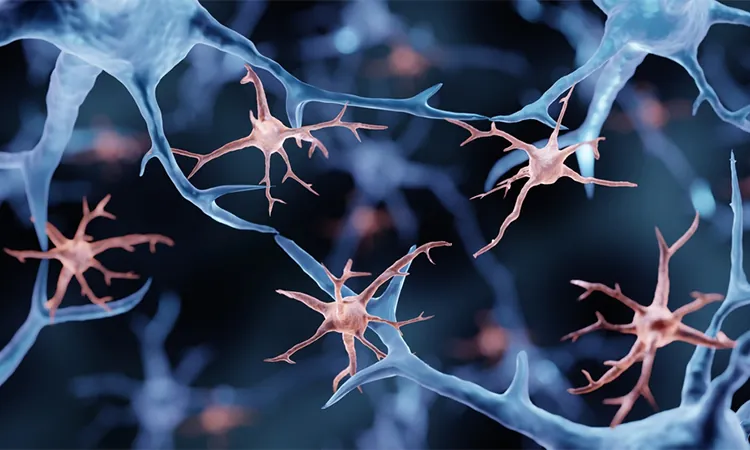
Revolutionary Microglia Replacement Method Halts ALSP Progression in Groundbreaking Trials
2025-07-18
Author: Arjun
A Life-Saving Breakthrough for ALSP Patients
In a stunning development for those afflicted with Adult-onset Leukoencephalopathy with Axonal Spheroids and Pigmented Glia (ALSP), a severe neurodegenerative disorder, researchers from Fudan University unveiled a potential game-changer: the replacement of defective brain microglia. This innovative approach, reported in a recent study published in Science, could mark the dawn of effective treatment for a disease that has long been deemed fatal.
Understanding ALSP: The Silent Assassin
ALSP strikes with little warning, typically manifesting around the age of 43, and results from mutations in the crucial CSF1R gene, vital for the health of microglia—the immune cells of the central nervous system. With these cells compromised, patients face rapid neurological decline and brain damage, paving a path toward certain death within a few years.
Professor Bo Peng, the senior author of this transformative study, emphasized, "ALSP is a fatal disease with no current curative treatment. By replacing CSF1R-deficient microglia with healthy ones, we have the potential to halt disease progression entirely."
The Revolutionary MISTER Strategy
Peng and his team developed a groundbreaking method known as MISTER (Microglia Intervention Strategy for Therapy and Enhancement by Replacement) in 2020. Central to this strategy is a method called Mr BMT (Microglia Replacement by Bone Marrow Transplantation), which replaces defective microglia with healthy counterparts from donor bone marrow.
This recent research is monumental, as it marks the first application of this technique in both animal models and human subjects.
Animal Models: From Research to Reality
To overcome the rarity of ALSP, scientists engineered mice to carry human CSF1R mutations, confirming that these animals reflected key characteristics of the disease. After utilizing the Mr BMT method, an impressive 91.15% of the dysfunctional microglia were replaced with healthy ones, leading to remarkable reversals in brain damage and improved cognitive and motor function.
Promising Clinical Trial Results
Buoyed by these preclinical outcomes, the researchers embarked on a clinical trial involving eight ALSP patients, all of whom received healthy donor bone marrow transplants without the need for preliminary CSF1R inhibition.
MRI scans conducted 12 months post-treatment revealed striking differences: untreated patients faced swift brain atrophy and disease deterioration, whereas those who underwent microglia replacement showed no signs of progression for at least 24 months and stabilized motor and cognitive capabilities.
A New Hope for Other Neurological Conditions?
This pioneering approach extends beyond ALSP; its implications could reach other neurological disorders linked to microglial dysfunction. Professor Peng’s team is hopeful that their innovative techniques will lay the groundwork for future therapies across various brain diseases.
"We have set a new paradigm by demonstrating the effectiveness of microglia replacement as a clinical therapy with promising results. Looking ahead, we hope to leverage this technology to combat a broader range of neurological challenges," Peng concluded.
The Future of Neurotherapeutics
As we stand on the brink of a potential revolution in neurotherapeutics, the microglia replacement strategy not only brings hope to those with ALSP but also sparks possibilities for addressing other devastating brain diseases. With ongoing research, the future looks brighter for many.



 Brasil (PT)
Brasil (PT)
 Canada (EN)
Canada (EN)
 Chile (ES)
Chile (ES)
 Česko (CS)
Česko (CS)
 대한민국 (KO)
대한민국 (KO)
 España (ES)
España (ES)
 France (FR)
France (FR)
 Hong Kong (EN)
Hong Kong (EN)
 Italia (IT)
Italia (IT)
 日本 (JA)
日本 (JA)
 Magyarország (HU)
Magyarország (HU)
 Norge (NO)
Norge (NO)
 Polska (PL)
Polska (PL)
 Schweiz (DE)
Schweiz (DE)
 Singapore (EN)
Singapore (EN)
 Sverige (SV)
Sverige (SV)
 Suomi (FI)
Suomi (FI)
 Türkiye (TR)
Türkiye (TR)
 الإمارات العربية المتحدة (AR)
الإمارات العربية المتحدة (AR)